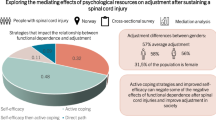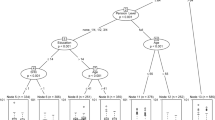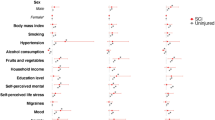Abstract
Background: Despite evidence of the relationship between time use and health and well-being, and the World Health Organization's recognition of activity limitation as a measure of dis-ability, there has been limited investigation into the activity patterns of persons with disabilities. Methods: Interviews and time diaries to provide preliminary descriptive and analytical information about the daily time use patterns of men with a spinal cord injury (SCI) living in the community (n=312) compared with the time use data of able-bodied men (n=3617) collected as part of the 1992 Canadian General Social Survey. The study also examined relationships between time use by men with SCI and selected factors (severity of disability and socioeconomic status). Findings: Statistically different time use patterns between the SCI and able-bodied subjects. The men with spinal cord injury spent on average 7.2 h in leisure activities (able-bodied men=6.0 h); 4.7 (7.7) h in productivity; 3.7 (2.3) h in personal care; and 8.5 (8.0) h sleeping. The SCI men's lesser productivity time was accounted for largely by the lack of time spent in paid work. The average time use of the SCI sample showed the most time spent in passive leisure pursuits such as watching TV and listening to the radio. The sample rated their satisfaction with their time use as mediocre, but levels of adjustment to disability were moderate to high. Regression analysis revealed that severity of disability (lesion level, functional independence, environment) did not predict the amount of time spent in personal care, productivity, leisure, or sleep. Socioeconomic status had a mild predictive relationship with time allocation. Implications: The findings suggest men with SCI are socially isolated relative to their able-bodied peers. Recommendations are made and include both methodological considerations for further time use studies with persons with SCI, and policy recommendations. The latter focus on the need for rehabilitation, education and resources that go beyond functional independence such that persons with SCI can expand both their leisure and productivity roles and become better socially and economically integrated into society.
Similar content being viewed by others
Log in or create a free account to read this content
Gain free access to this article, as well as selected content from this journal and more on nature.com
or
Author information
Authors and Affiliations
Rights and permissions
About this article
Cite this article
Pentland, W., Harvey, A., Smith, T. et al. The impact of spinal cord injury on men's time use. Spinal Cord 37, 786–792 (1999). https://doi.org/10.1038/sj.sc.3100908
Published:
Issue date:
DOI: https://doi.org/10.1038/sj.sc.3100908
Keywords
This article is cited by
-
BCI system with lower-limb robot improves rehabilitation in spinal cord injury patients through short-term training: a pilot study
Cognitive Neurodynamics (2022)
-
In-kind transfers and home production
Review of Economics of the Household (2020)
-
How Do Working-Age People With Disabilities Spend Their Time? New Evidence From the American Time Use Survey
Demography (2014)
-
Potential role of oxidative stress on the prescription of rehabilitation interventions in spinal cord injury
Spinal Cord (2013)
-
Predictors of Leisure Time Physical Activity Among People with Spinal Cord Injury
Annals of Behavioral Medicine (2012)



